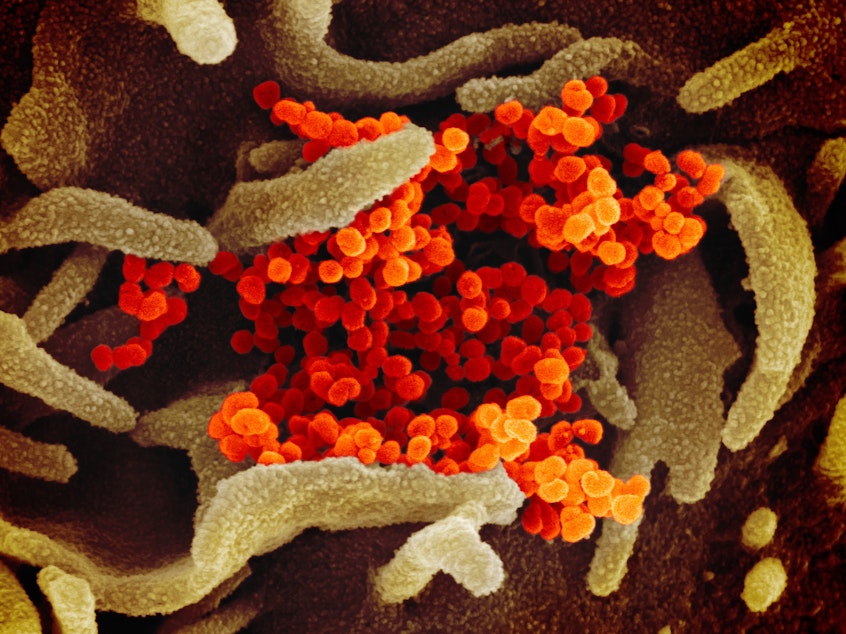Why bacteria's resistance to antibiotics is a problem in a viral pandemic

Each year, a particular kind of infection kills more than 35,000 people in the United States. Those deaths are caused by antibiotic-resistant bacteria.
And some scientists are concerned about how the current pandemic might affect such bacteria.
That’s because hospitalized patients with coronavirus will often be given antibiotics to fight any secondary bacterial infection, not to fight the virus itself.
Benjamin Kerr is a professor of biology at the University of Washington who studies how bacteria become antibiotic resistant. He spoke to KUOW’s Angela King about antibiotics and the pandemic.
Benjamin Kerr: So there does appear to be heightened use of antibiotics as a proactive tactic in Covid-19 patients and hospitals to prevent secondary bacterial infections. Similarly, antifungals are being used to prevent secondary fungal infections.
A recent report in the journal Science suggested that antibiotic use for this purpose was surging both in the U.S. and worldwide. As a consequence, bacteria may be experiencing more exposure to antibacterial compounds generally, antibiotics specifically, which has been shown to favor the evolution of antibiotic resistance. It might seem confusing why antibiotic prescription has increased during a viral epidemic, but actually, in past viral pandemics, the 1918 flu epidemic as well as the 2009 flu epidemic, a large fraction of individuals, the cause of death turned out to be due to secondary bacterial infections.
Sponsored
Angela King: So if bacteria are becoming resistant to the antibiotics we currently have, what’s being done to create new ones that might be more effective?
Kerr: Many of the pharmaceutical companies have actually abandoned the antibiotic design market in part because these drugs may be less lucrative as they lose efficacy when resistance arises. There are also several university-based labs interested in expanding the arsenal of antibiotics antibacterial compounds more generally.
King: How do antibacterial ingredients in home products contribute to the problem of drug resistance?
Kerr: Some cleaning products, detergents, but actually many different items, shampoos, toothpastes, contain antibacterial compounds. Also antibacterial compounds are used in alcohol-free hand sanitizers. The main thing to know is that if a product is advertised as antibacterial, the chances are high that the compounds are not providing any additional protection against something like coronavirus. So if you're checking cleaning products or detergents or again, alcohol-free hand sanitizers, ingredients like triclosan and or benzalkonium chloride or compounds like this, again, if your target is bacteria specifically, there may be some protection there. But with regards to protection for something like coronavirus, you're not getting any additional protection there.
King: Any products you would suggest or others maybe we should steer clear from?
Kerr: I would definitely recommend checking with the CDC or EPA websites on any particular product for basic cleaning. A mix of soap and warm water works well through the same principle as good hand hygiene.
Correction, 8:50 a.m., 5/7/2020: An earlier version of this story misspelled benzalkonium chloride.




